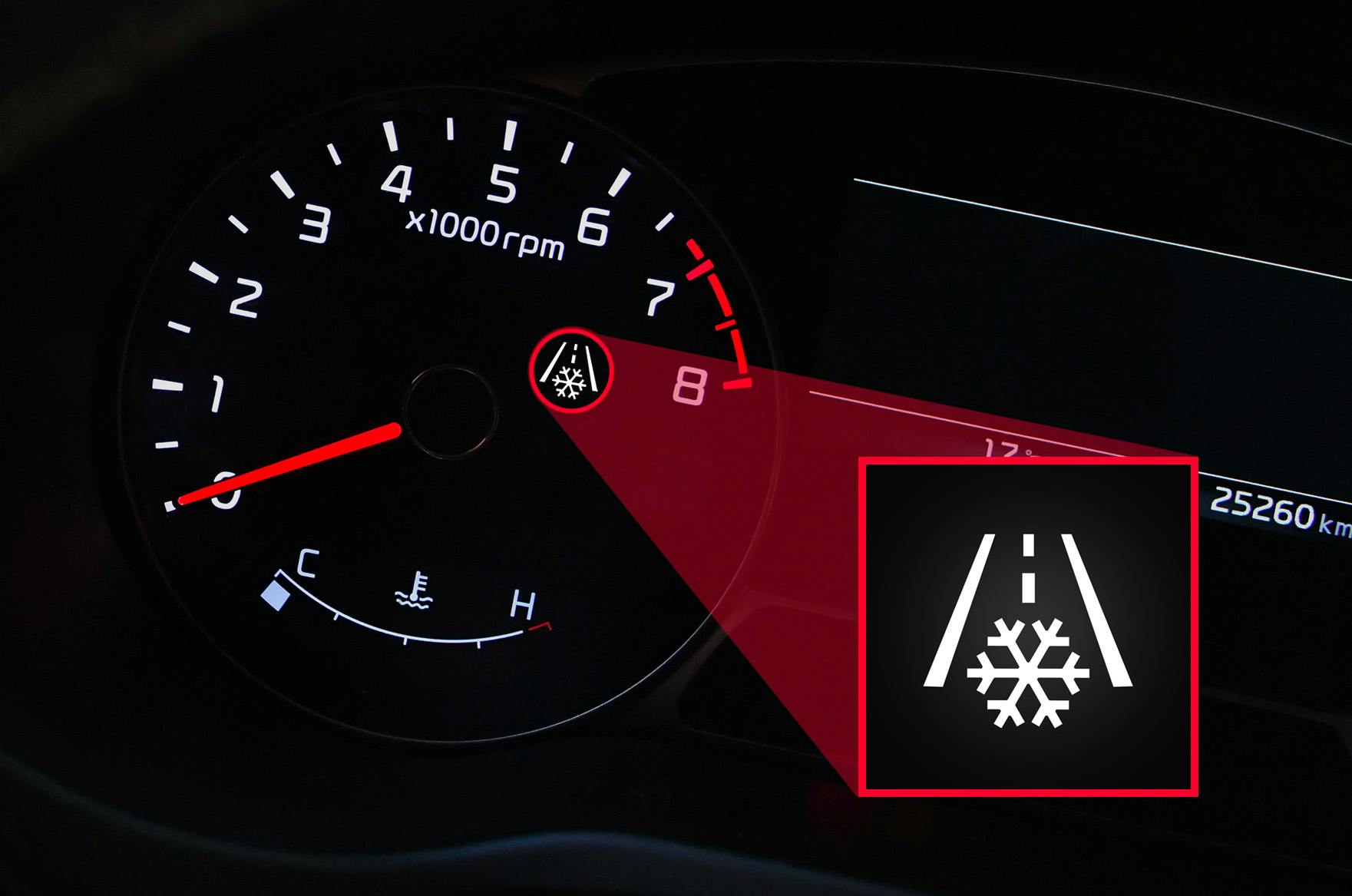Outside Temperature Warning Light: When does it light up?

The outside temperature warning light probably speaks for itself, but many motorists cannot tell exactly at what temperature it lights up. Modern cars are also equipped with sensors that detect other parameters in addition to the outside temperature.
So when does the outside temperature light come on? Do you need to wear winter tires, and what are the different variations of this warning light?
Inhaltsverzeichnis
- Outside temperature warning light function
- What temperature does it indicate?
- Why does it come on above freezing point?
- The outside temperature warning light should not be ignored
- How to adjust driving when the temperature is low?
- Interesting facts about the outside temperature warning light
- Frequently asked questions about the outside temperature warning light
- Conclusion
Outside temperature warning light function

This warning light has the shape of a snowflake but can also be represented as a snowflake on the road. It usually belongs to informative white lights, but on some cars, it can light up as an orange warning light, for example, in the case of Ford cars.
The main purpose of this warning light is to inform or warn the driver about potentially impaired driving conditions due to low temperatures. The driver has to adapt his driving to colder temperatures, which can often mean ice on the road.
What temperature does it indicate?

This warning light relies on the vehicle's ambient temperature sensor to monitor the outside temperature. The driver is alerted by the illuminated outside temperature indicator when the temperature drops below a predefined limit. This limit may vary depending on the car brand, but the standard range is from 0°C (32 °F) to 4°C (39.2 °F).
For example, in the case of Volkswagen cars, this limit is set to 4 °C (39.2 °F). The indicator lights up if the sensor detects the given temperature but does not go out until the temperature rises to at least 6 °C (42.8 °F).
Why does it come on above freezing point?
It should be noted that the sensor for measuring the outside temperature measures the temperature of the surrounding air. Thus if the engine is heated up, it may show a higher temperature than the real one. The deviation can vary up to 5 °C (41 °F) depending on the sensor's location. This means that the real temperature can be just below the freezing point.

Another factor to consider is that on a clear morning before sunrise, the road surface is cooler than the air. The sensor also does not take into account the wind, which can significantly reduce the temperature.
Even if the outside air temperature reached 4 °C (39.2 °F) and the sensor had no deviation, certain parts of the roads may be icy, such as the parts in the shade. You also have to be careful when driving over the bridge above the river.

Aquaplaning: How to prevent it and how to manage it?
And to make matters worse, water begins to expand at a temperature of 4 °C (39.2 °F). We will not go into the details of physics, but in a nutshell, you need to be even more careful than usual and watch out for puddles, as the risk of aquaplaning is higher than under normal conditions.
The outside temperature warning light should not be ignored

This warning light is usually white when speaking globally, but that doesn't mean it should be ignored. Ice on the road can significantly increase the risk of an accident, especially in the case of reckless driving.
To summarize, these are the risks when driving in cold temperatures:
- The formation of ice on the road, which causes a slippery surface
- Reduced traction and tire grip, which affects the handling of the vehicle
- Reduced visibility due to fog, snow, or ice
- Black ice, which is difficult to see and extremely dangerous
How to adjust driving when the temperature is low?
Experienced drivers can skip this part, but the following tips will come in handy for those who don't drive often or have only recently received their driver's license. When the outside temperature warning light appears on the dashboard, consider the following:
- Slow down: Reduce your speed to be able to react in the event of a skid on a slippery surface and, in the worst case, avoid a collision at high speed.
- Maintaining distance: This tip is even more important than the previous one. Allow extra space between your vehicle and the vehicle in front to account for the longer stopping distance.
- Check tire pressure: Ensure your tires are properly inflated according to the manufacturer's recommendations.
- Winter tires: If the temperature is regularly low, there is probably no need to remind you of the necessity of using winter tires, which have better traction in cold conditions.
- Clean your windshield: To maintain visibility, keep your windshield clear and free of ice, snow, and fog. Many drivers in the morning rush often do not properly clean the frosted windshield. The result is poor visibility and a higher risk of an accident.
- Check the level of antifreeze: Make sure that the antifreeze in your vehicle is at the right level and that you are using the right mixture.
Interesting facts about the outside temperature warning light
Temperature Varies: As said before, the outside temperature light will usually appear when the temperature drops below 4°C (39.2 °F). However, this limit may vary slightly between different car manufacturers.
Not just an icing warning: While the primary purpose of this warning light is to warn the driver of possible ice formation, it can also serve as a reminder to do a general check of your vehicle for colder conditions. This includes, for example, checking tire pressure, the level of antifreeze, and windshield wiper fluid.
Advanced systems: Some modern cars have advanced temperature monitoring systems that can provide more specific information about road conditions, including real-time temperature measurements.
Frequently asked questions about the outside temperature warning light
Q: If the outside temperature indicator does not appear, does this mean there is no danger of ice on the road?
Answer: It is not always the case. The indicator serves as a warning when the temperature drops below a pre-defined threshold. However, it's important to remember that road conditions can still be dangerous even if this warning light is off. Always be careful when driving in cold weather, as ice may still be present in certain areas.
Q: Can the outside temperature warning light be turned off?
Answer: The option to turn off this warning light or the system that monitors the outside temperature is unavailable, but it depends on the car. This is mainly because this indicator serves as an important safety feature.
Q: Does the outside temperature warning light mean I need to use winter tires?
Answer: No, winter tires are not necessary. However, it is a reminder that lower temperatures can lead to more dangerous driving conditions. Winter tires provide better traction and handling in cold and icy conditions, so it's a good idea to consider using them when temperatures regularly drop below 7°C (44.6 °F).
Conclusion
Although the outside temperature warning light plays an informative role, it is good to keep in mind the risks associated with driving in colder weather and not only to adapt the driving to these conditions but to ensure that the car is prepared for such weather.